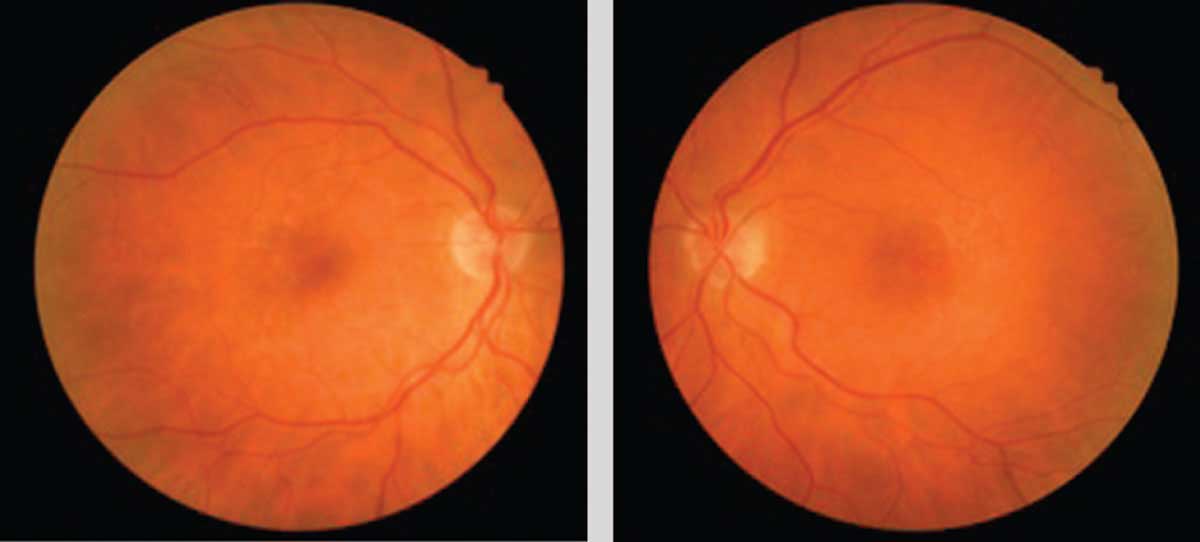 |
Increasing the risk for nAMD patients is fellow eye involvement. Photo: Amanda Legge, OD. Click image to enlarge. |
While treating a patient for neovascular age-related macular degeneration (nAMD), it’s important not to overlook the fellow eye, which should be closely monitored for potential signs of disease. Based on current literature, unilateral nAMD develops into a bilateral condition in approximately 10% to 20% of cases. A recent analysis found that 18% of unilateral cases had gone on to affect the fellow eye, with treatment being initiated on the second eye within two years of the first 61% of the time.
Researchers gathered data from the Swedish Macula Register including treatment-naive patients who initially underwent unilateral treatment for nAMD and eventually required bilateral treatment. Patients received treatment from 2010 until 2018 or 2020 at the latest. The researchers divided the data into three time periods: 2010-2013, 2014-2016 and 2017-2018.
They found that 5,216 of the total 28,670 patients (18%) treated for unilateral nAMD went on to develop the condition in the fellow eye with a mean age of 78 and 69% of the bilateral subjects being female. Before nAMD was detected in the fellow eye, patients underwent an average of 1.58 years of treatment on the first eye with an average of nine injections. The incidence rate for bilateral treatment within two years was 11%. Symptom duration between the first- and second-treated eyes was not different, which the researchers tried to explain.
“One reason for this could be the fact that the shortest symptom interval that can be chosen in the Swedish Macula Register is zero to two months,” they wrote in their paper. “This is quite a long time and does not discriminate between early symptom duration and longer. Another reason could be that many nAMD lesions may be asymptomatic for a long time and that patients already receiving treatment in one eye may wait until their next visit to report symptoms in the other.”
One positive finding was that best-corrected visual acuity (BCVA) of the second eye was higher at the start of treatment than was observed in the first eye, although it was still lower than the baseline BCVA, the researchers pointed out. “This indicates a greater probability of early diagnosis of the second eye if the patient’s first eye is still being treated and thus regularly examined,” they noted. “The importance of examining both eyes and regular monitoring of the second eye has been pointed out previously to ensure timely treatment and thus improved visual outcome.”
The researchers concluded, “We found that nAMD was diagnosed in the fellow eye in 60% of the patients within two years and in about 20% within six months. The risk of developing nAMD in the second eye increased with time, and thus, the risk of nAMD developing in the second eye was greater in the group with the longer follow-up period.”
The current analysis highlights the need for diligent monitoring of both eyes throughout all stages of treatment to identify visual or structural changes before they progress.
Adrian, ML, Schroeder M, Westborg I. What about the fellow eye in treatment of neovascular age-related macular degeneration? Analysis of data from the Swedish macula register. Acta Ophthalmol. January 22, 2022. [Epub ahead of print]. |


